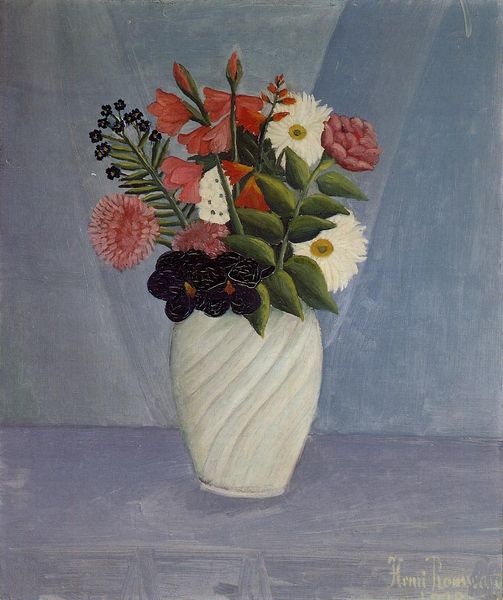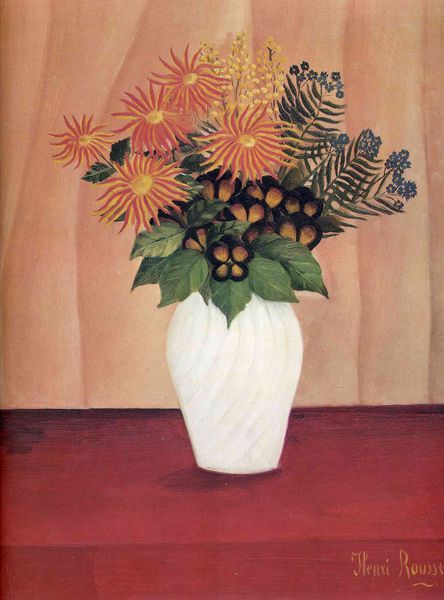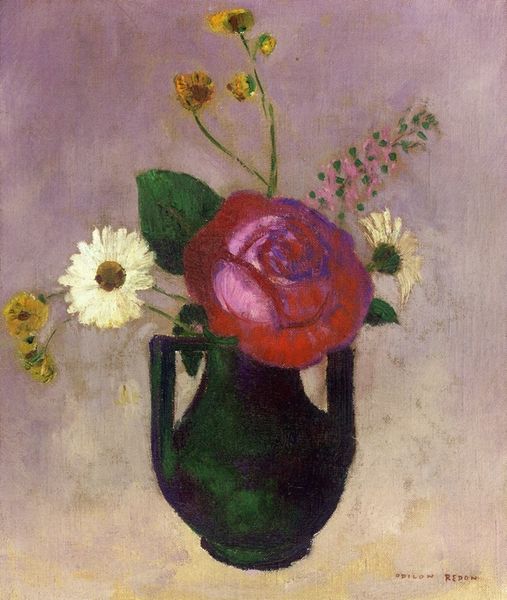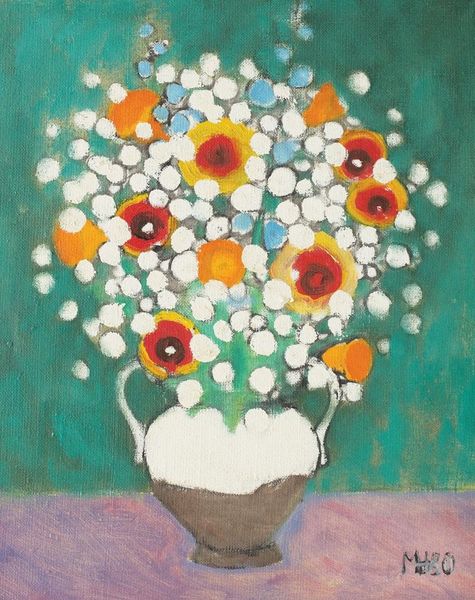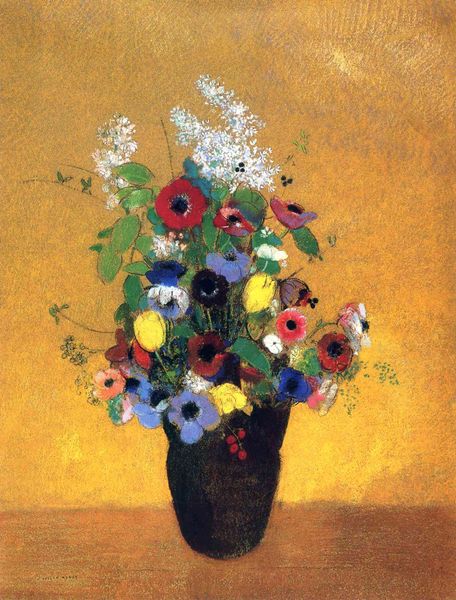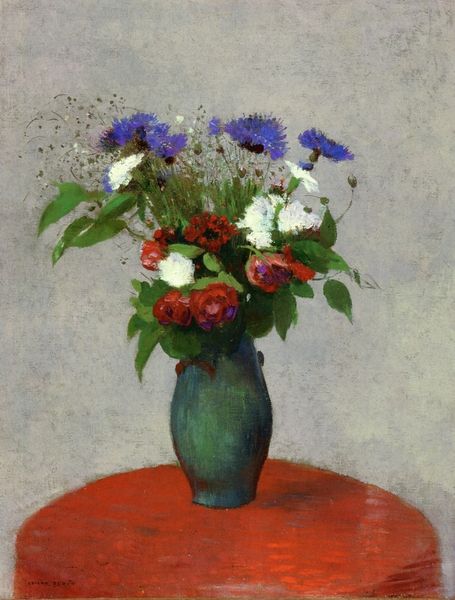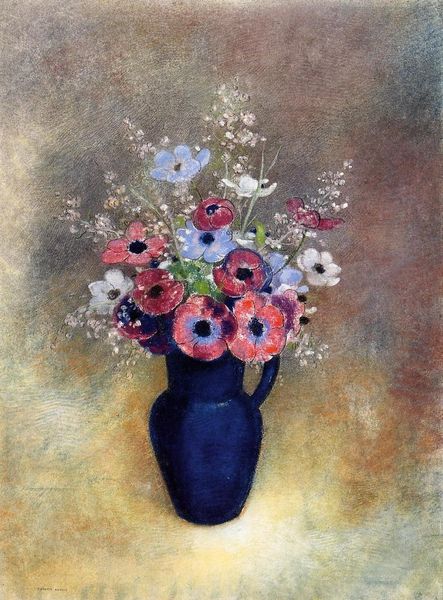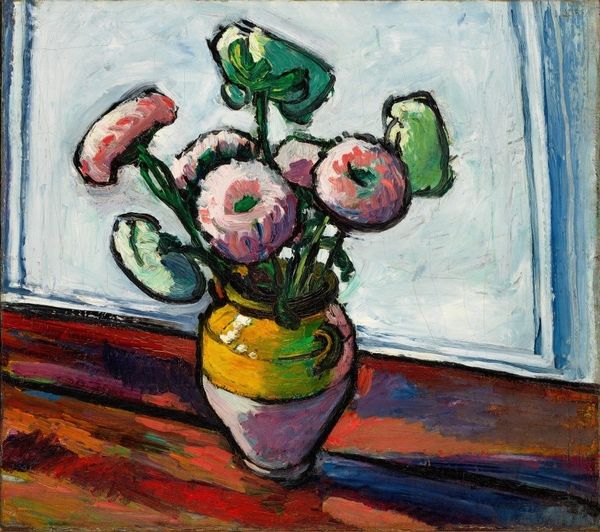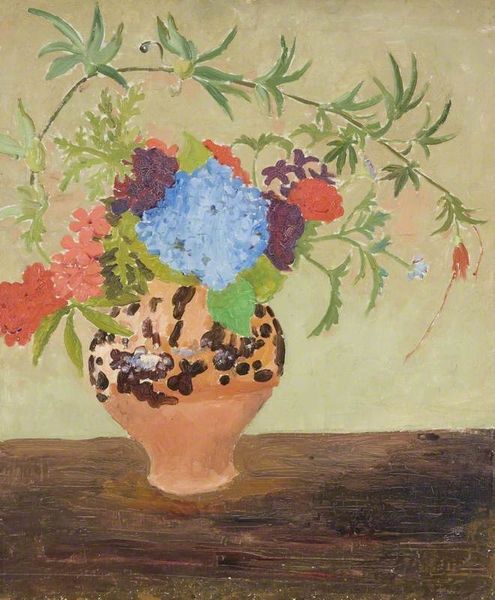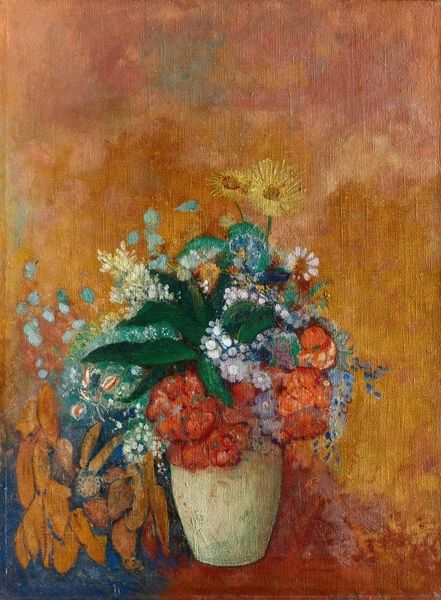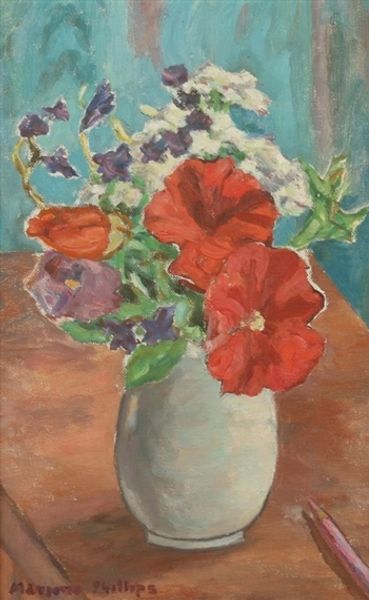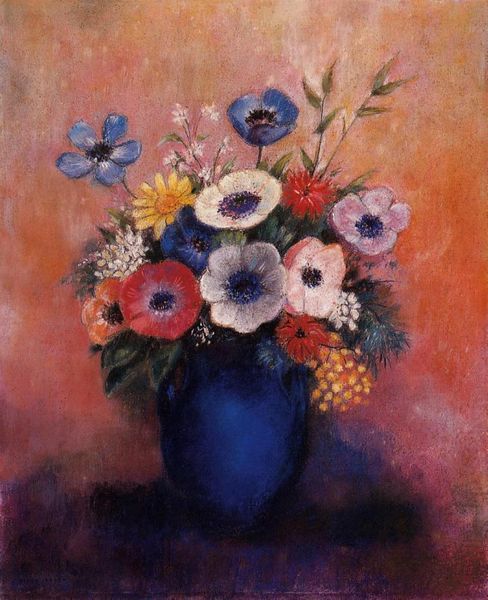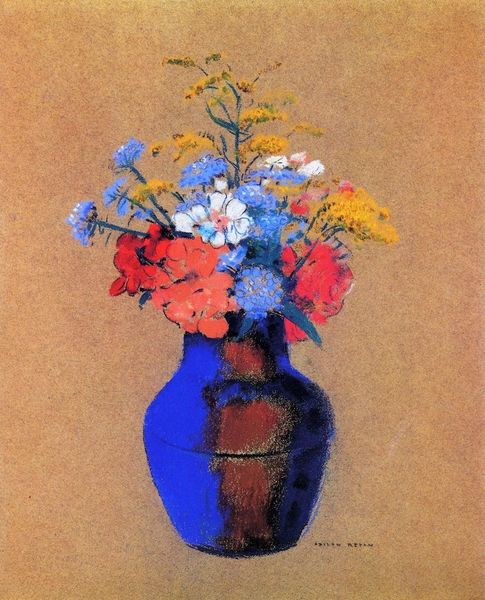
Copyright: Public domain
Art Historian: Editor: Editor: We’re looking at Henri Rousseau’s "Bouquet of Flowers" from 1909. It's an oil painting showing a simple vase of colorful flowers. I'm struck by how naive the style feels, almost like a child painted it, especially the stiffness in the petals. What do you see in this piece? Art Historian: What immediately grabs my attention is the conscious manipulation of materials here. It's a post-impressionistic painting but the materials, particularly the thick application of oil paint and flattened perspective, remove this artwork from conventional bourgeois standards. Why do you think the artist went with the "naive" style as you mentioned? Do you think it was on purpose, or maybe because he did not know better? Editor: That's a good question. I assumed it was a choice, that he sought to distance himself from realism to focus on something else? Perhaps emotions conveyed through simple shapes? Art Historian: I think you might be on to something there. Let's think about his background. Rousseau was a self-taught artist. He didn’t go through formal training. So his process was intuitive and raw. Looking closely, do you notice the surface texture and brushstrokes of the white vase? Think about how that handmade vase contrasts with factory-produced consumer goods of that era. It might be read as an explicit attempt to challenge the industrial age, focusing instead on unique handmade commodities, even as it challenges conventional bourgeoise portraiture through the flowers. Editor: Interesting! I never thought about it that way. So the painting is not just about what’s depicted, but also about the physical process and context surrounding its creation. Thank you for opening my eyes to that, Expert! Art Historian: Indeed! Every brushstroke tells a story beyond the image itself. It changes my outlook completely. Thanks to you.
Comments
No comments
Be the first to comment and join the conversation on the ultimate creative platform.
